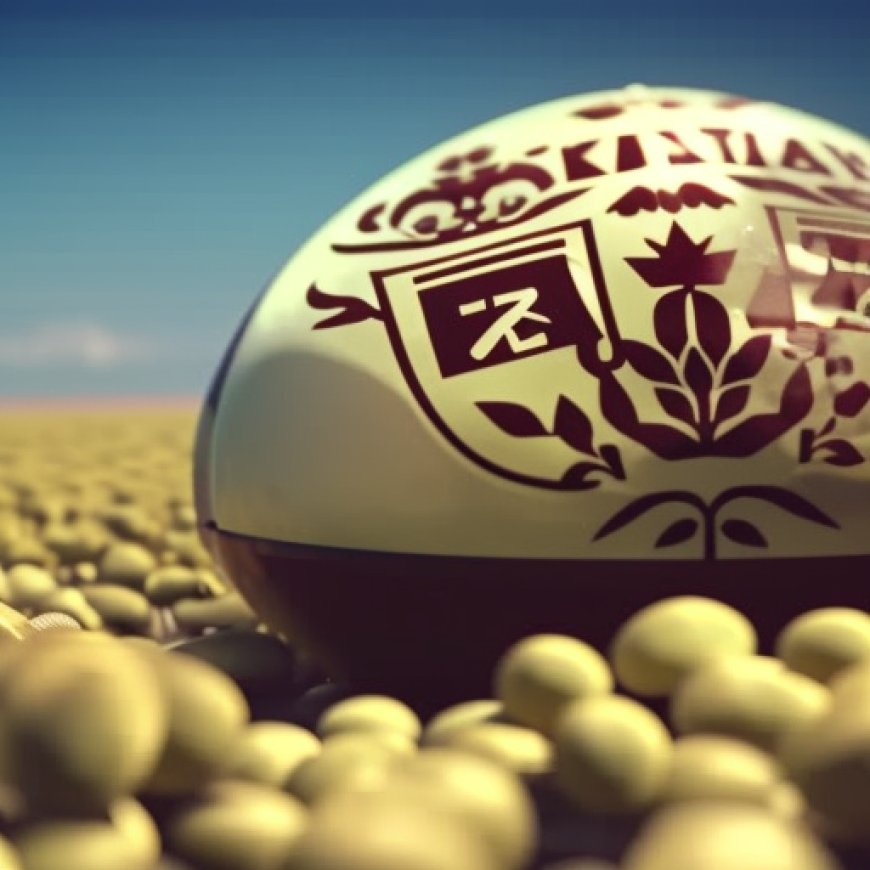Kazakhstan and EU Seek Increase in Trade of Agricultural Products – The Times Of Central Asia
Kazakhstan and EU Seek Increase in Trade of Agricultural Products Times of Central Asia


Kazakhstan and EU Discuss Removal of Trade Barriers for Agricultural Products
High-Level Mission to Kazakhstan
On May 29, Kazakhstan’s Agriculture Minister Aidarbek Saparov met with European Commissioner for Agriculture Janusz Wojciechowski to discuss the removal of trade barriers for agricultural products. The meeting was part of the European Commissioner’s first High-Level Mission to Kazakhstan, which included a delegation of 40 agri-food businesses and organizations from the European Union.
Continued Discussions on Market Access
The discussions focused on the technicalities of opening the EU market for Kazakh honey, meat, and dairy products. Additionally, the export of pig and poultry products from EU countries to Kazakhstan was also on the agenda. Both parties agreed to continue these discussions to facilitate trade between Kazakhstan and the EU.
Kazakhstan’s Agricultural Exports to the EU
- In 2023, Kazakhstan exported 650 thousand tons of wheat to EU countries.
- Other exports included flax seeds, rapeseed, and processed grain crops.
- Although not yet licensed to export livestock products to the EU, Kazakh fish is in high demand by European buyers.
- 18 out of 70 fish processing enterprises in Kazakhstan have been granted the right to export to the EU.
- Kazakhstan’s fish product exports amounted to around 25 thousand tons, worth $85 million in 2023.
- About 11 thousand tons were exported to EU countries for a total of $60 million.
Potential for Exporting Meat and Honey
With a strong tradition of livestock farming, Kazakhstan is keen to export its meat, especially horsemeat. Minister Saparov proposed intensifying efforts to export meat along with securing approval to export Kazakh honey to the EU. This aligns with the Sustainable Development Goals (SDGs) of promoting sustainable agriculture and fostering economic growth through international trade.
EU-Kazakhstan Trade Partnership
Commissioner Wojciechowski emphasized the importance of the High-Level Mission as a signal of the intention to strengthen the partnership and bilateral trade in agri-food products with Kazakhstan. The country serves as a key gateway for EU food and beverage producers seeking access to the Central Asian market. In 2023, EU agricultural exports to Kazakhstan amounted to €702 million, highlighting the significance of this trade relationship in achieving the SDGs related to industry, innovation, and infrastructure.
Conclusion
The discussions between Kazakhstan and the EU represent a positive step towards removing trade barriers and enhancing bilateral trade in agricultural products. This collaboration supports several SDGs, including responsible consumption and production, zero hunger, and decent work and economic growth. As negotiations continue, there is potential for increased market access and economic opportunities for both parties.
SDGs Addressed in the Article
The article addresses several Sustainable Development Goals (SDGs) including:
- SDG 2: Zero Hunger
- SDG 8: Decent Work and Economic Growth
- SDG 12: Responsible Consumption and Production
- SDG 17: Partnerships for the Goals
Specific Targets Under the SDGs
Based on the content of the article, the following specific targets can be identified:
- Target 2.3: By 2030, double the agricultural productivity and incomes of small-scale food producers.
- Target 8.2: Achieve higher levels of economic productivity through diversification, technological upgrading, and innovation.
- Target 12.3: By 2030, halve per capita global food waste at the retail and consumer levels and reduce food losses along production and supply chains.
- Target 17.11: Significantly increase the exports of developing countries, in particular with a view to doubling the least developed countries’ share of global exports by 2020.
Indicators Mentioned or Implied in the Article
The article implies several indicators that can be used to measure progress towards the identified targets:
- Indicator for Target 2.3: Volume of production per labor unit by classes of farming/pastoral/forestry enterprise size.
- Indicator for Target 8.2: Annual growth rate of real GDP per employed person.
- Indicator for Target 12.3: Global food loss index.
- Indicator for Target 17.11: Developing countries’ and least developed countries’ share of global exports.
Table of SDGs, Targets, and Indicators
| SDGs | Targets | Indicators |
|---|---|---|
| SDG 2: Zero Hunger | Target 2.3: Double agricultural productivity and incomes of small-scale food producers by 2030. | Volume of production per labor unit by classes of farming/pastoral/forestry enterprise size. |
| SDG 8: Decent Work and Economic Growth | Target 8.2: Achieve higher levels of economic productivity through diversification, technological upgrading, and innovation. | Annual growth rate of real GDP per employed person. |
| SDG 12: Responsible Consumption and Production | Target 12.3: Halve per capita global food waste at the retail and consumer levels and reduce food losses along production and supply chains by 2030. | Global food loss index. |
| SDG 17: Partnerships for the Goals | Target 17.11: Significantly increase the exports of developing countries, particularly aiming to double the least developed countries’ share of global exports by 2020. | Developing countries’ and least developed countries’ share of global exports. |
The article discusses Kazakhstan’s efforts to increase its agricultural exports to the European Union, which aligns with SDG targets aimed at improving economic productivity, reducing trade barriers, and fostering international partnerships for sustainable development. The indicators mentioned or implied provide a way to measure progress in these areas, particularly in terms of export volumes and economic growth rates.
Copyright: Dive into this article, curated with care by SDG Investors Inc. Our advanced AI technology searches through vast amounts of data to spotlight how we are all moving forward with the Sustainable Development Goals. While we own the rights to this content, we invite you to share it to help spread knowledge and spark action on the SDGs.
Fuente: timesca.com

Join us, as fellow seekers of change, on a transformative journey at https://sdgtalks.ai/welcome, where you can become a member and actively contribute to shaping a brighter future.







